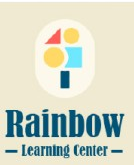Understanding Child Care and Preschool Education: A Focus on the HEI Curriculum
Child care and preschool education lay the foundation for a child’s future development, and understanding the curriculum in early education is essential for both educators and parents. The Higher Education Institution (HEI) curriculum for child care and preschool education offers comprehensive insights into child development, learning theories, and effective teaching strategies. This curriculum not only enhances the knowledge base of future educators but also equips them with the necessary skills to foster a nurturing environment for young learners.



Education Institution (HEI) curriculum
Education Institution (HEI) curriculum for child care and preschool education offers comprehensive insights into child development, learning theories, and effective teaching strategies. This curriculum not only enhances the knowledge base of future educators but also equips them with the necessary skills to foster a nurturing environment for young learners.
Importance of Early Childhood Education
Core Components of the HEI Child Care Curriculum
HEI curriculums for child care and preschool education are typically structured around the following key areas:
Future educators are trained to understand the cognitive, social, emotional, and physical development stages that children undergo in their early years. This knowledge helps educators tailor their teaching methods and create activities that promote optimal development.
HEI programs integrate various learning theories such as Piaget’s stages of cognitive development, Vygotsky’s sociocultural theory, and Erikson’s psychosocial stages. These theories provide a foundational understanding of how children learn, interact with others, and process information.
Effective curriculum design is crucial to ensure that young children are engaged in meaningful learning experiences. The HEI curriculum emphasizes the importance of creating a balanced curriculum.

Key Skills for Educators in Early Childhood Settings
The HEI curriculum prepares educators with both theoretical knowledge and practical skills necessary for working in child care and preschool environments. Some of the essential skills include:
- Effective CommunicationCommunication is crucial when working with young children. Educators are trained to use clear and engaging language, actively listen to children, and encourage open communication. Furthermore, they are taught how to effectively communicate with parents and colleagues to ensure a collaborative approach to child development.
- Classroom ManagementManaging a preschool classroom requires patience, creativity, and the ability to maintain structure and organization. Educators learn various strategies to manage behavior, create routines, and ensure that all children feel safe and supported in the learning environment.
- Collaborative TeachingMany HEI programs emphasize teamwork and collaboration in the classroom. Educators are encouraged to work closely with other teachers, assistants, and even parents to create a cohesive and supportive learning environment for children.
- Creative Play and LearningPlay is considered one of the most effective ways for young children to learn. The HEI curriculum highlights the role of creative play in cognitive and social development. Educators learn to integrate imaginative play, arts, music, and movement into daily activities to support a child’s learning journey.
The Role of Parents and Families in Early Childhood Education
While early childhood education primarily takes place in schools and child care settings, parents and families play a vital role in supporting their child’s development. The HEI curriculum stresses the importance of building strong relationships between educators and families. Educators are encouraged to communicate regularly with parents about their child’s progress and to involve them in the learning process, whether through parent-teacher conferences, volunteering, or sharing learning materials.
Challenges in Early Childhood Education and How the HEI Curriculum Addresses Them
- Lack of ResourcesIn many areas, early childhood programs face a lack of resources, from funding to educational materials. The HEI curriculum prepares future educators to be resourceful and adaptable, creating enriching learning environments even with limited resources.
- Diverse Learning NeedsChildren come from varied cultural, linguistic, and socioeconomic backgrounds, and they may have different learning needs. The HEI curriculum emphasizes strategies for differentiating instruction and fostering a classroom environment that is welcoming and supportive of all children.
- Burnout and StressWorking in child care and preschool education can be demanding. The HEI curriculum includes training in self-care and professional development to help educators manage stress, avoid burnout, and maintain their passion for teaching.




